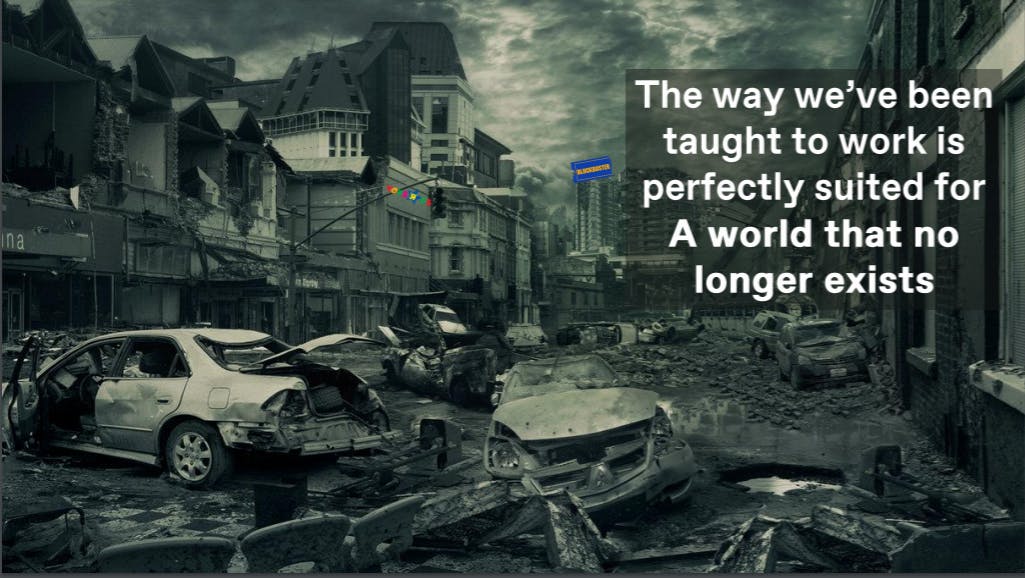Agile has become one of those words in tech which gets slapped onto every job description and misused on a daily basis by tech professionals themselves. There are three distinct stages of a tech company.
- Early Stage Startups: From idea to Product/Market Fit (PMF).
- Growth Stage Startups: From PMF to scaling.
- Enterprise: Introduction of new products to a mass audience.
For Product-led organisations such as Amazon this looked like this:
- Marketplace for buying & selling books online.
- Marketplace for buying & selling goods online.
- New Products such as Amazon Web Services & Amazon Echo.
Along the way you will always find that Product-led companies that break into Enterprise take big bets and are willing to lose big if necessary. The Amazon Fire Smartphone was an example of this.
For Project-led organisations along the journey from startup to enterprise the agile mindset often gets diluted and the following diagram inspired by Marty Cagan describes the root cause of failure.
The Agile Waterfall
Three overarching reasons have led to a state of failure where Project-led enterprises fail to innovate fast and begin to lag behind new entrants competing with more innovative products and better customer experiences.
- Products are being run like I.T.
- What they call Agile is really just a waterfall process.
- Inability to make big bets.
Problem 1
The first problem is that I.T-led organisations manage Products like they do I.T. There is a clear distinction between the Products and Projects in tech companies. I.T is usually run by a C.I.O and usually manages any system that doesn’t impact the customer if it goes down. Such as Helpdesk, Expense Management software like Workday or HR Talent Management software like Halogen. Products are any software that does directly impact the customer immediately if it were to go down, this is run by the CTO. This includes customer enabling products such as core API’s as well as customer facing software like a mobile app.
Problem 2
The way I.T led organisations manage products as projects is shown in the illustration above but I will break it down in more detail below.
- IDEAS: Narrow set of contributors such as just the exec team rather than involving Product Managers, UX Designers and Engineers at this stage.
- BUSINESS CASE: Focuses on forecasting costs & revenue, often a guesstimate and not often compared to actuals. Lean Canvas should be used instead for new products or a light Opportunity Assessment for new features to an existing product.
- ROADMAP: Milestone and Delivery focused. Often celebrating a launch as success rather than meaningful metrics such as customer acquisition or conversion percentages.
- REQUIREMENTS: Scope, budget and time are nearly always compromised as requirements change whilst projects are in-flight. Instead ideas should be validated against 4 key risks, Value Risk, Usability Risk, Feasibility Risk and Business Viability Risk.
- DESIGN: UX Designers are treated as an internal design agency whereby stakeholders provide them with requirements for design. UX Designers should be involved from the idea stage to create and iterate on prototypes during Product Discovery. Only validated designs progress to Product Delivery but most designs (up to 75%) would get killed.
- BUILD: Engineers are given requirements to just code when really engineers understand the restrictions and opportunities with tech such as voice and A.I. Therefore they should be involved from the idea stage as they are a great source of new ideas.
- DEPLOY: Customer validation is left too little too late once the new product is delivered. Some Enterprises take as long as a year to release new features, let alone products. The irony is that Management are often detached and lose patience as they struggle to comprehend how their competitors are gaining market share.
Finally there are lessons to learn from the recent incumbent Toys R Us who have become bankrupt. They made 2 fatal flaws, they outsourced fulfilment to Amazon in 2001 because they didn’t believe in innovating and adapting to the internet. The second strategic failure was that they did not continue to add value to their community e.g. Soft play or shows for kids. They failed to take big bets.
Don’t make the same mistake these large companies are.


